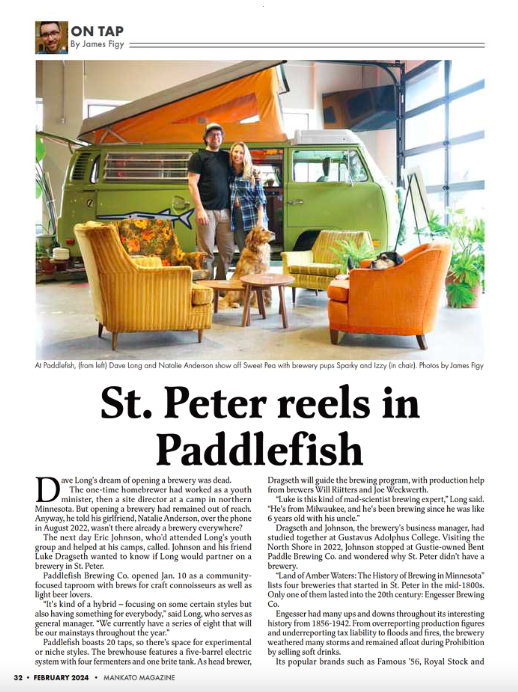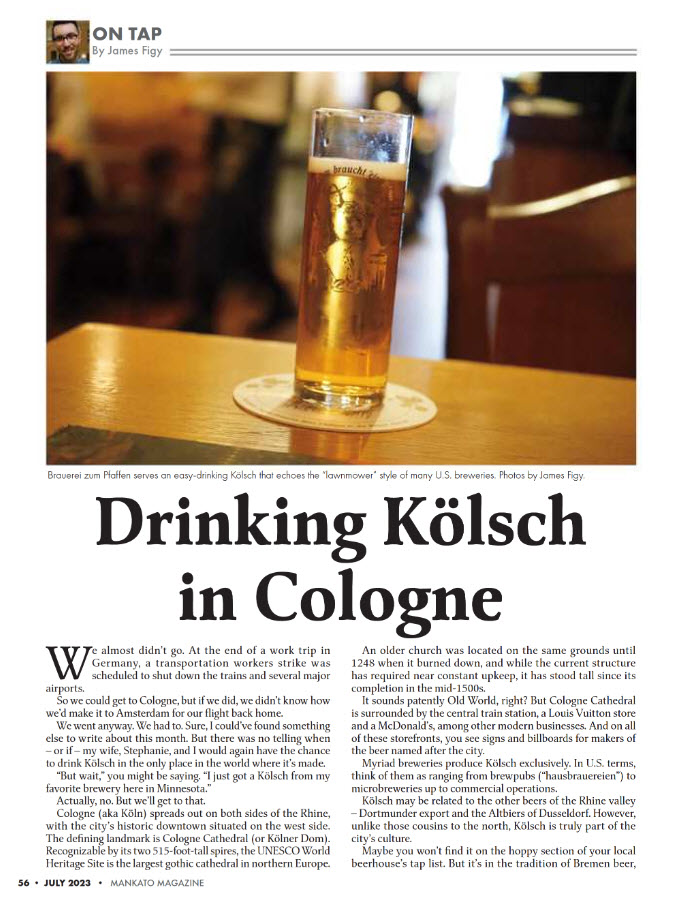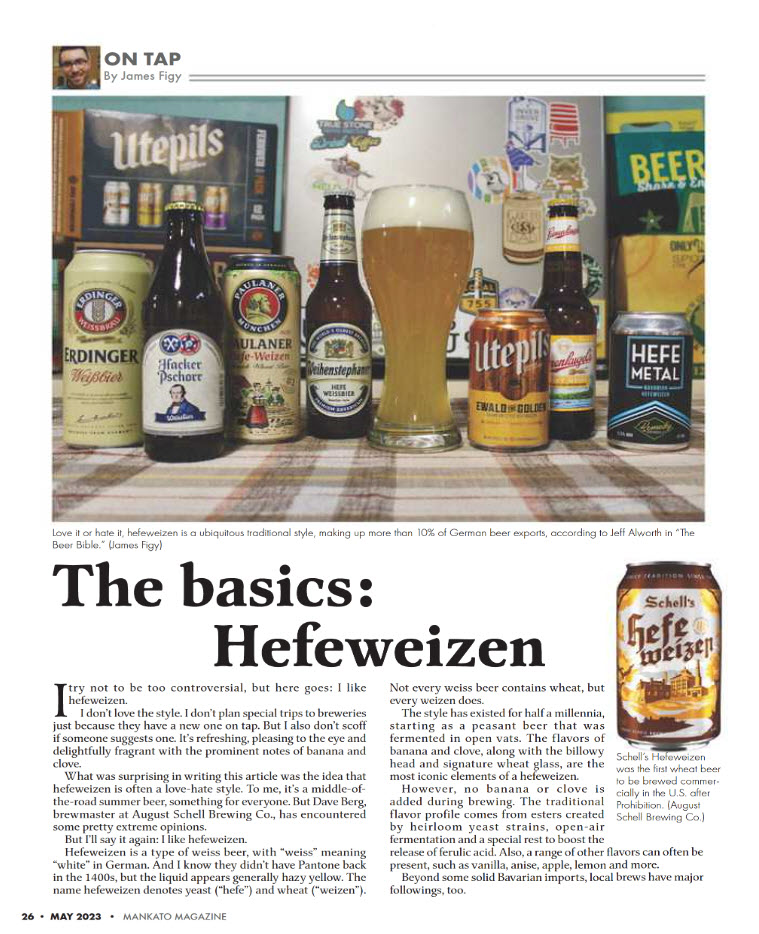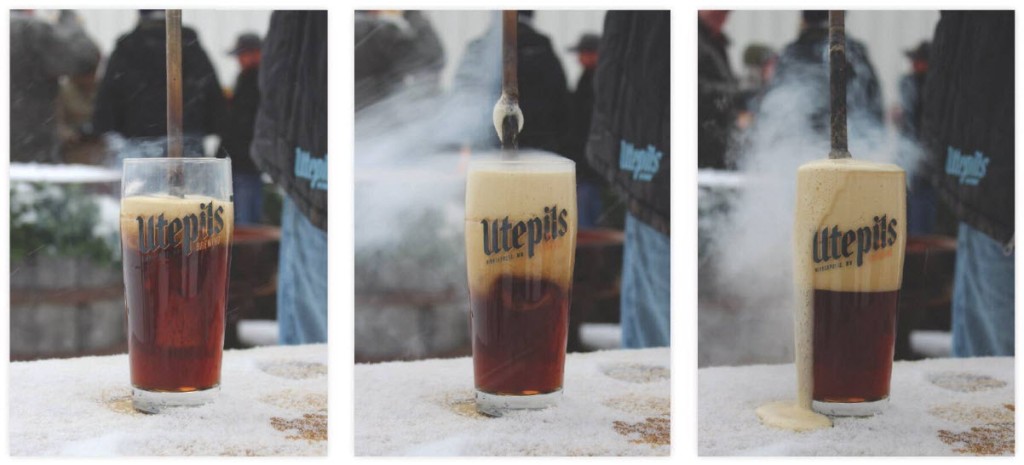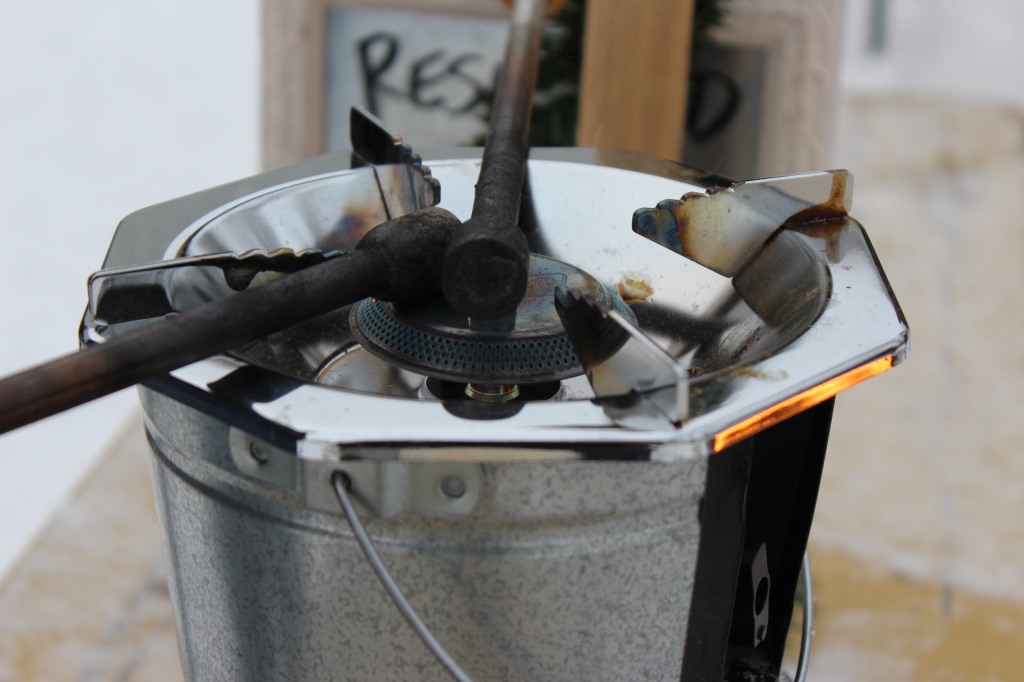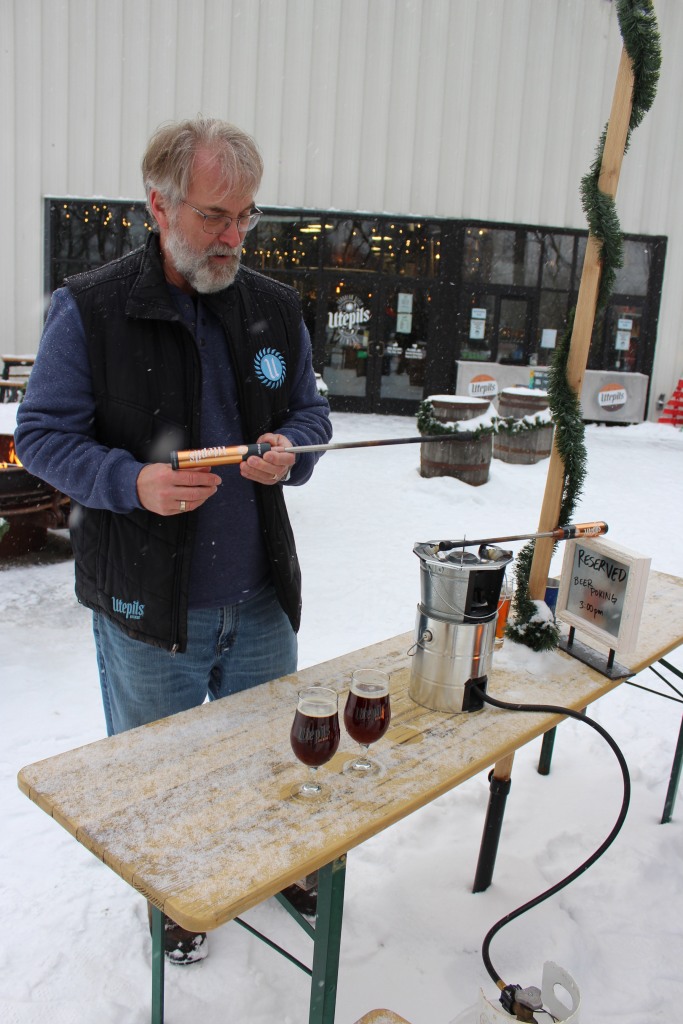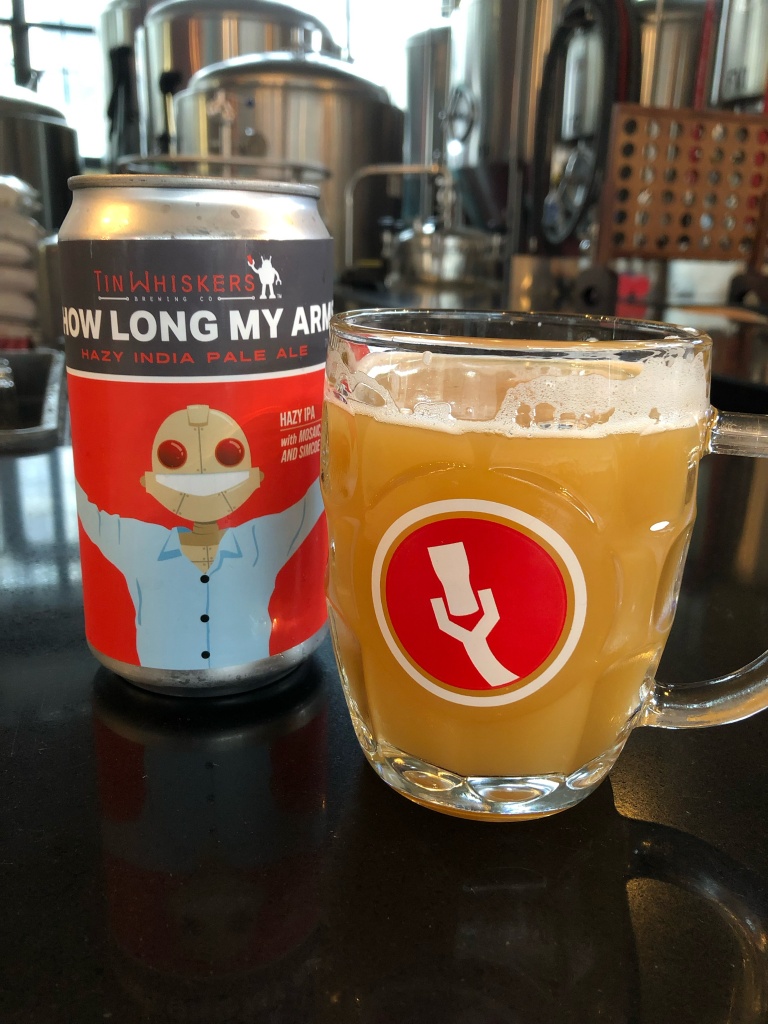
Dave Long’s dream of opening a brewery was dead.
The one-time homebrewer had worked as a youth minister, then a site director at a camp in northern Minnesota. But opening a brewery had remained out of reach. Anyway, he told his girlfriend, Natalie Anderson, over the phone in August 2022, wasn’t there already a brewery everywhere?
The next day Eric Johnson, who’d attended Long’s youth group and helped at his camps, called. Johnson and his friend Luke Dragseth wanted to know if Long would partner on a brewery in St. Peter.

Paddlefish Brewing Co. opened Jan. 10 as a community-focused taproom with brews for craft connoisseurs as well as light beer lovers.
“It’s kind of a hybrid — focusing on some certain styles but also having something for everybody,” said Long, who serves as general manager. “We currently have a series of eight that will be our mainstays throughout the year.”
Paddlefish boasts 20 taps, so there’s space for experimental or niche styles. The brewhouse features a five-barrel electric system with four fermenters and one brite tank. As head brewer, Dragseth will guide the brewing program, with production help from brewers Will Riitters and Joe Weckwerth.
“Luke is this kind of mad-scientist brewing expert,” Long said. “He’s from Milwaukee, and he’s been brewing since he was like 6 years old with his uncle.”

Dragseth and Johnson, the brewery’s business manager, had studied together at Gustavus Adolphus College. Visiting the North Shore in 2022, Johnson stopped at Gustie-owned Bent Paddle Brewing Co. and wondered why St. Peter didn’t have a brewery.
“Land of Amber Waters: The History of Brewing in Minnesota” lists four breweries that started in St. Peter in the mid-1800s. Only one of them lasted into the 20th century: Engesser Brewing Co.
Engesser had many ups and downs throughout its interesting history from 1856-1942. From overreporting production figures and underreporting tax liability to floods and fires, the brewery weathered many storms and remained afloat during Prohibition by selling soft drinks.
Its popular brands such as Famous ’56, Royal Stock and Engesser Export were well known in the area as well as in the Twin Cities.
Paddlefish pays tribute to the old brewery with its Engesser light American lager. Most of the beer names have local inspiration. This includes the Red Owl amber, which pays tribute to the grocery store that was once housed in the same space.
“We found this really cool picture of when this building used to be a Red Owl taken from across the street,” Long said. “And it’s in our taproom. We have a history wall by some soft seating. We really wanted to highlight the history of St. Peter in the area.”

Paddlefish isn’t solely an homage to the city. The crew’s love of the outdoors is clear in the bold hues of green and blue. Greenery grows throughout the taproom with the careful cultivation by Lindsey Westerberg, director of hospitality and guest relations. Anderson, interior designer and creative director, deserves credit for the vision of the space.
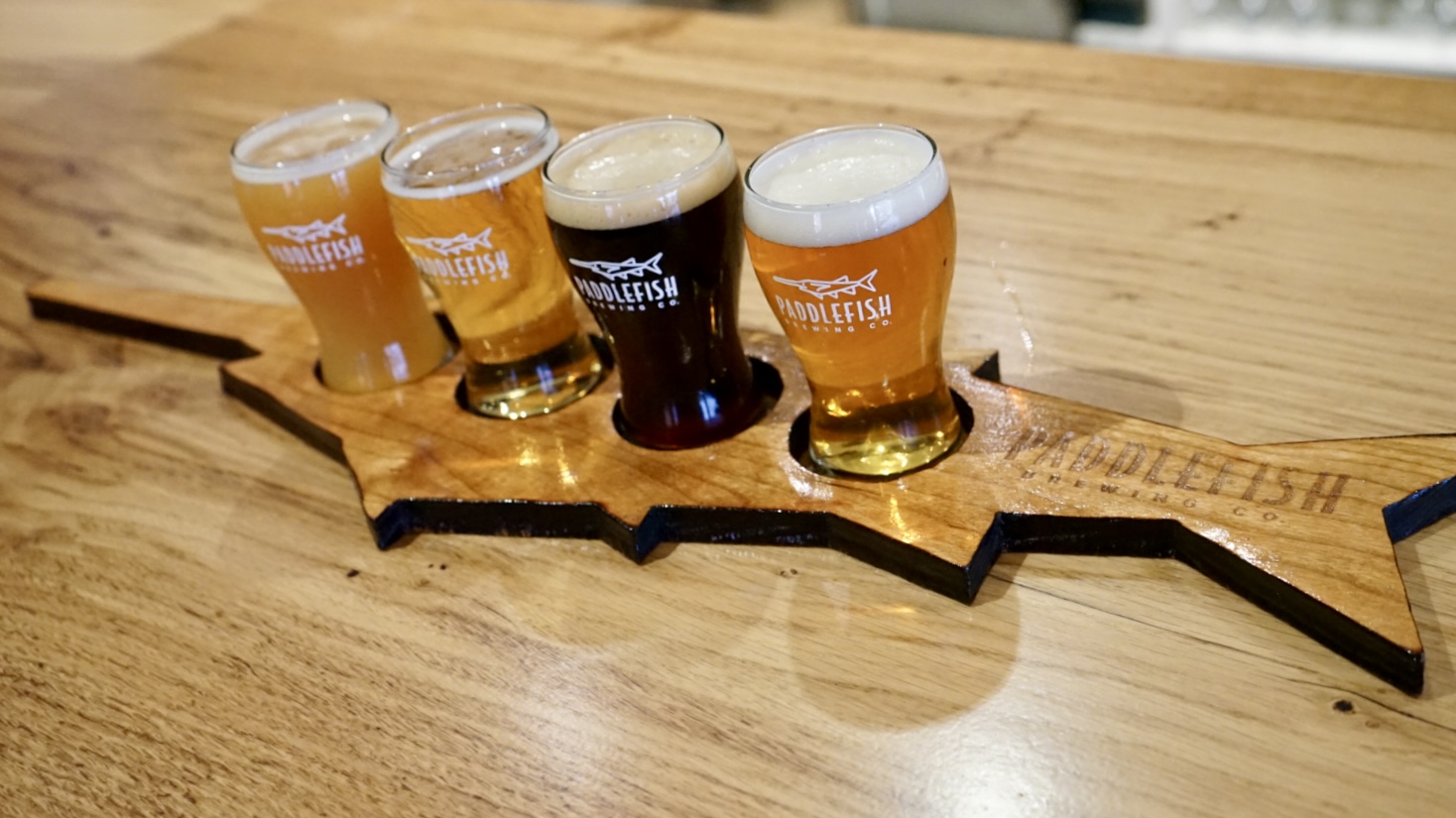
Long’s Microbus, lovingly called Sweet Pea, is parked inside the taproom, and visitors are welcome to climb inside to check it out. Occasionally, it’s seen driving around with the large Paddlefish logo on the passenger door.
The name came as Long researched St. Peter after partnering with Johnson and Dragseth. He stumbled upon an article with a picture of a fisherman holding a paddlefish. Diving deeper, he learned a Department of Natural Resources study had identified an outsize population of paddlefish nearby in the Minnesota River.
“They’re unique, and they’re super fascinating. So we wanted to reflect a little bit of the paddlefish’s characteristics,” Long said.
Anglers don’t usually try to catch paddlefish, but sometimes these bottom feeders get hooked. It’s a good reminder, Long said. Sometimes things come to you, not the other way around.
Paddlefish Brewing Co. core beers
Almost Capital American pale ale – 6.4% ABV, 37 IBUs
Engesser light American lager – 5.1% ABV, 10 IBUs
First Apostle porter – 6.1% ABV, 28 IBUs
Gustie golden ale — 4.6% ABV, 17 IBUs
Jolly Giant hazy IPA – 7.2% ABV, 24 IBUs
Mountain Mama West Coast IPA — 8%ABV, 55 IBUs
On the Road Again cherry-infused sour – 6.9% ABV, 15 IBUs
Red Owl amber ale – 6.5% ABV, 25 IBUs
James Figy is a writer and beer enthusiast based in St. Paul. In Mankato, he earned an MFA in creative writing from Minnesota State University and a World Beer Cruise captain’s jacket from Pub 500. Instagram: @JamesBeered
This article originally appeared in the February 2024 issue of Mankato Magazine.
